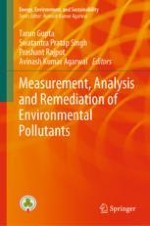2020 | OriginalPaper | Buchkapitel
8. Vertical Profiling of Aerosol and Aerosol Types Using Space-Borne Lidar
verfasst von : Alaa Mhawish, K. S. Vinjamuri, Nandita Singh, Manish Kumar, Tirthankar Banerjee
Erschienen in: Measurement, Analysis and Remediation of Environmental Pollutants
Verlag: Springer Singapore
Aktivieren Sie unsere intelligente Suche, um passende Fachinhalte oder Patente zu finden.
Wählen Sie Textabschnitte aus um mit Künstlicher Intelligenz passenden Patente zu finden. powered by
Markieren Sie Textabschnitte, um KI-gestützt weitere passende Inhalte zu finden. powered by
